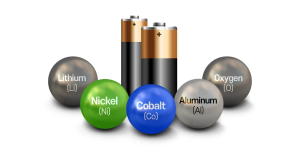Methods for Charging a Boat Battery
The most important thing to remember while charging marine batteries is to use the appropriate charger for the battery type. The voltage and chemistry of the battery must be compatible with the charger you select. Boat chargers are often permanently fixed and watertight for ease of use. You must adjust the programming on your current lead-acid battery charger if you plan to use lithium marine batteries. It makes that the charger runs at the proper voltage for each step of charging.

Methods for Charging Marine Batteries
Marine batteries can be charged in a variety of methods. Using a boat’s main engine is one of the most popular techniques. It can be turned off to use solar panels. An additional, less popular technique is to use wind turbines.
Marine Battery Types
Marine batteries come in three different varieties. Everybody deals with a particular task. They are as follows:
Starter Battery
The purpose of these marine batteries is to start the boat’s engine. Even while they provide a quick energy boost, it is insufficient to keep the boat moving.
Marine Deep Cycle Battery
These maritime batteries include thicker plates and a high out. They supply steady electricity to the boat so that electronics like the fish finder, GPS, and lighting can operate.
Two-In One Battery
Deep cycle and starter batteries are both performed by marine batteries. The motor can be turned on and maintained by them.
Why Proper Charging Is Important for Marine Batteries
The lifespan of marine batteries will be impacted by improper charging. Nevertheless, since deep-cycle marine batteries are lithium-ion batteries, they are immune to those issues. Without causing any degradation, marine batteries can be used down to 50% of their capacity. Typically, they don’t require recharging right away after use.
Cycling is one of the primary challenges you face. Marine batteries may be completely recharged several times. These batteries allow you to charge them to full capacity, reduce them to as little as 20% of their maximum capacity, and then refill them to full.
To guarantee the long-term viability of the deep cycle battery, charge it only when it is 50% full or lower. Its lifespan will be impacted if it is continuously discharged shallow while it is approximately 10% below full.
When you are on the sea, don’t worry about the marine batteries’ power. When you go back on land, drain all of their energy and refill them completely.
Select the Appropriate Deep Cycle Charger
The charger that comes with the battery is the finest one for marine batteries. Although you can switch around the types of batteries and chargers, doing so could endanger the marine batteries. They will sustain damage if the mismatched charger produces excessive voltage. It’s also possible that the marine batteries have an error code and won’t charge. Fast battery charging for marine batteries is another benefit of using the proper charger. Li-ion batteries, for example, have a larger current capacity. When using the proper charger, they can recharge more quickly than other battery kinds.
If the original manufacturer’s charge needs to be replaced, go with a smart charger. Select lithium-battery specific chargers. Once the battery is fully charged, they turn off. They charge steadily.
Examine the charger's amperage and voltage rating
You need to select a charger that gives your marine batteries the right amount of voltage and amps. For example, a 12V battery and a 12V charger work together. Check the amps, or charge currents, in addition to the voltage. These could be 10A, 20A, or even 4A.
To find the charger’s amps, first check the amp hour (Ah) rating of the marine batteries. The charger is incorrect if its amp rating is higher than the Ah rating of the battery. The marine batteries will get damaged if such a charger is used.
Examine the surrounding environment
Both extremes of cold and heat can have an impact on marine batteries. Temperatures between 0 and 55 degrees Celsius are suitable for lithium battery operation. The ideal charging temperature is, nevertheless, higher than freezing. In order to address the problem of below-freezing temperatures, certain marine batteries are equipped with heaters. It guarantees that even in the dead of winter, they are charged to the maximum capacity.
A Guide to Charging Boat Batteries
The most important things to remember when charging deep-cycle marine batteries are listed below in a brief checklist:
- Select the Proper Charger
Always match the voltage, amps, and chemistry of the marine batteries with the charger. There are portable and onboard marine battery chargers available. Portable chargers are more cost-effective and useful anytime, anywhere.
- Select the Appropriate Moment
Select the ideal time to charge your marine batteries, taking into account the suitable temperature.
- Empty the battery terminals of any debris
Battery terminal grime will shorten the charging period. Prior to beginning any charging, make sure the terminals are clean.
- Plug in the power supply
A black cable should be connected to a black terminal, and a red wire to red terminals. Connect the charger and turn it on once the connections are secure. When your marine batteries are fully charged, if you have a smart charger, it will turn off by itself. You need to schedule the charging and disconnect the second charger once the batteries are fully charged.
- Unplug and put the charger away
Unplug the marine batteries first when they are fully charged. Disconnect the red cable after disconnecting the black cable.
Conclusion
In summary, the procedure of charging marine batteries is not too complicated. Nonetheless, take care to observe any safety measures when handling the wires and connectors. Before turning on the power, make sure all of the connections are secure.






